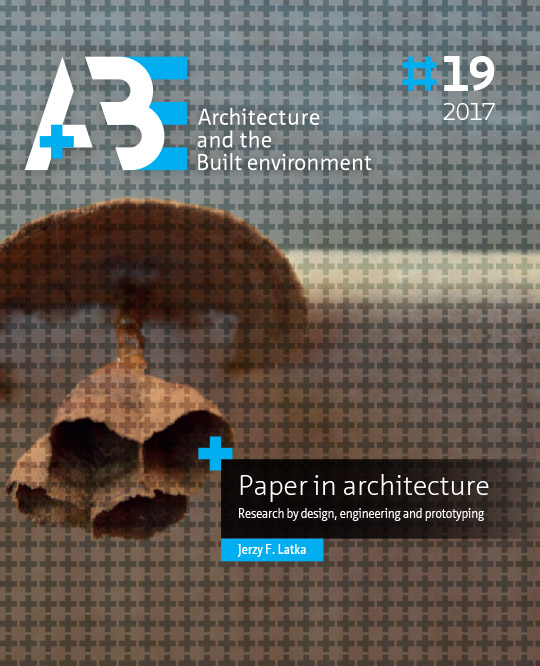Paper in design and architecture
Typology
DOI:
https://doi.org/10.7480/abe.2017.19.3757Abstract
Paper base products such as corrugated cardboard, paper tubes, honeycomb panels and strong papers like Kraft and Washi can be successfully used for the production of interior design, products for everyday use, furniture, indoor partitions, pavilions and bigger architectural structures. Paper and its derivatives are often used for other purposes such as educational (origami) or social and artistic events.
Moreover, paper and cardboard are cheap and eco-friendly materials. Therefore, are they fit to be used in spatial structures for a limited lifespan. Fairs, exhibitions, major sporting events and other short-term events cost an enormous amount of money, and in many cases leave behind an ecological burden in the form of construction waste.
In 2008, under the EU’s revised Waste Framework Directive, a new target for recycling rates was established. By the year 2020 50% of municipal waste, including at least 50% of paper, metal, plastics and glass, will have to be recyclable, as well as 70% of demolition waste.
The projects presented in this chapter are characterised by different size, geometry, materials and properties, as well as by different connections between these aspects. The projects were created by various designers, including the author of this thesis.
In this chapter, the typology of paper and cardboard in design and architecture is described and depicted by means of realised examples. Smaller projects of the first two types are described below, in this chapter. For their part, more complicated structures, such as large pavilions, houses and public buildings, will be described in Chapter 4. Emergency and relief projects will be presented in Chapter 5.

